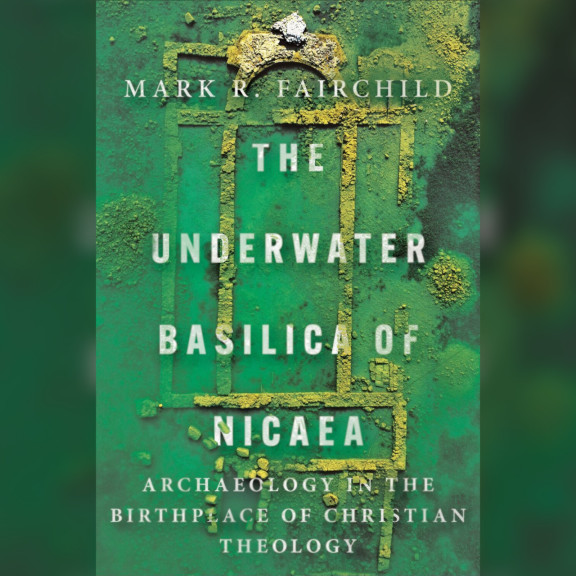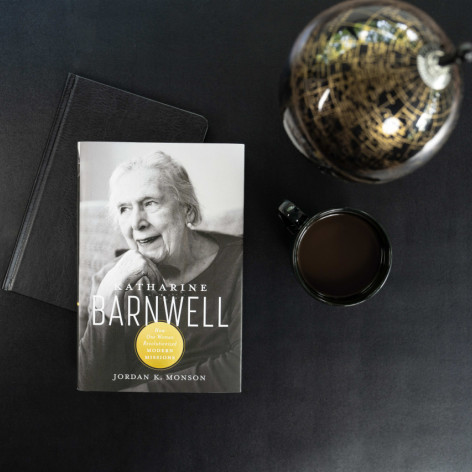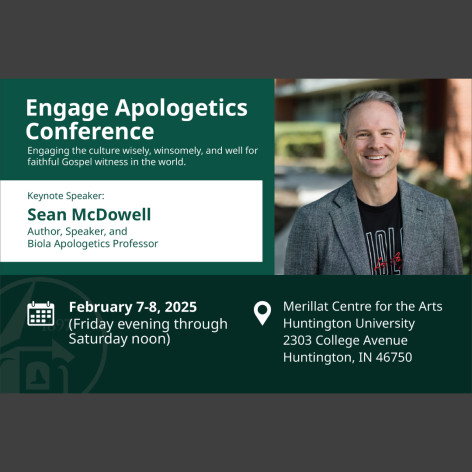Fairchild Publishes Book with Findings of Underwater Basilica of Nicaea

Book’s research indicates basilica as the location of the First Council of Nicaea and drafting of the Nicene Creed
HUNTINGTON, Ind. — It’s not every day that you have opportunities to conduct research at the site of a significant event in the history of your faith, but for Mark Fairchild, retired professor of Bible and religion, that opportunity has been a reality over the last several years. Fairchild has conducted research on an underwater basilica in ancient Nicaea he believes to be the site of the First Council of Nicaea, which produced the famous Nicene Creed, accepted as the foundational beliefs of Christian theology. Fairchild has published a book, titled “The Underwater Basilica of Nicaea: Archaeology in the Birthplace of Christian Theology,” with his findings.
The basilica was first discovered in 2014 through aerial photography of Lake Iznik in Turkey. The Archaeological Institute of America proclaimed the discovery as one of the top ten discoveries in the world that year. Mustafa Şahin, the chair of the archaeology department at Uludağ University in Bursa, Turkey, and a renowned archaeologist in the region, was assigned to oversee investigations of the site, with excavations beginning in 2015. In 2017, Şahin invited Fairchild to join the site’s research team, and together in 2018, Fairchild and Şahin published an article with initial findings in Biblical Archaeology Review, the largest archaeology publication in the world.
Fairchild was selected for a Fulbright Scholar Research Grant in 2022 and was granted a sabbatical by Huntington University to correspond with the Fulbright research opportunity. Fulbright coordinated Fairchild’s work through the U.S. Department of State and Turkish government agencies to open various avenues of research.
Among the notable discoveries at the site included the presence of several tombs, suggesting the basilica originated as a martyrion church to commemorate the life of a martyr. In addition to carbon dating the skeletal remains of the tombs, pottery shards and coins helped in dating the structure to the fourth century, which prompted Fairchild to consider if the structure could have been the location for the First Council of Nicaea, which was summoned in A.D. 325 to determine the accepted theological beliefs of the early Christian church.
“After assessing the archaeological evidence, researching the ancient descriptions of the council from the writings of those who attended the council and factoring in a pilgrimage token found at the site, I concluded that the submerged remains began as a martyrion and that this was indeed the place where the council first met,” Fairchild said.
The opportunity to work at a site as significant as the basilica is something Fairchild has relished, especially upon coming to the realization of the site’s history.
“Any new archaeological work is a thrill with the prospect of seeing a new structure,” Fairchild said. “For me, interest in the structure peaked when Professor Şahin was able to securely date the structure to the fourth century. Up to that point, 14 other Byzantine basilicas had been identified in the city of Iznik (ancient Nicaea). However, the earliest of the 14 dated to the sixth century. Thus, none of the other basilicas had anything to do with the First Council of Nicaea. … As the research progressed and more discoveries were made, it became increasingly clear that this was the place of the Council of Nicaea. Prior to this discovery, most modern scholars assumed that the council met in Constantine’s palace at Nicaea. However, when I reread the account by Eusebius, I discovered something important. Eusebius, the well-known the author of Ecclesiastical History, the most important early history of the church, was an eyewitness at the council. Eusebius, one of the attendees of the council in 325, wrote that the council first met in “a house of prayer,” that is, a church. Later, at the conclusion of the meetings (the council met for two months), he asserted that they met in Constantine’s palace for the final vote on the matter. Constantine’s palace has never been found at Nicaea, but the evidence indicates that the church has.”
Fairchild began the writing process for the book in 2022 and submitted a proposal to InterVarsity Press Academic. After receiving approval, Fairchild submitted his final draft at the end of 2023, with the book being published in November of 2024.
In the time since the book released, Fairchild has presented on his findings at the annual conferences of the Society of Biblical Literature, the American Academy of Religion, the Evangelical Theological Society and the Biblical Archaeology Society in San Diego and at the International Symposium on the History of Civilizations and Religion in Bursa.
Fairchild hopes readers of his book are able to gain an increased level of appreciation for the importance of a united church.
“The Council of Nicaea brings us back to an important time in church history when divisions threatened to divide the church into factions,” Fairchild said. “Instead, the leaders of the Christian communities from across the ancient world traveled hundreds of miles (usually by foot) in order to resolve issues. A united church is strong testimony of the truth of the Gospel. Christians today need to remain firm on the essentials of the faith while allowing others to think differently on peripheral issues.”
Fairchild is scheduled to lead two trips to Nicaea and additional locations in Turkey in 2025 and invites anyone interested to join him.



